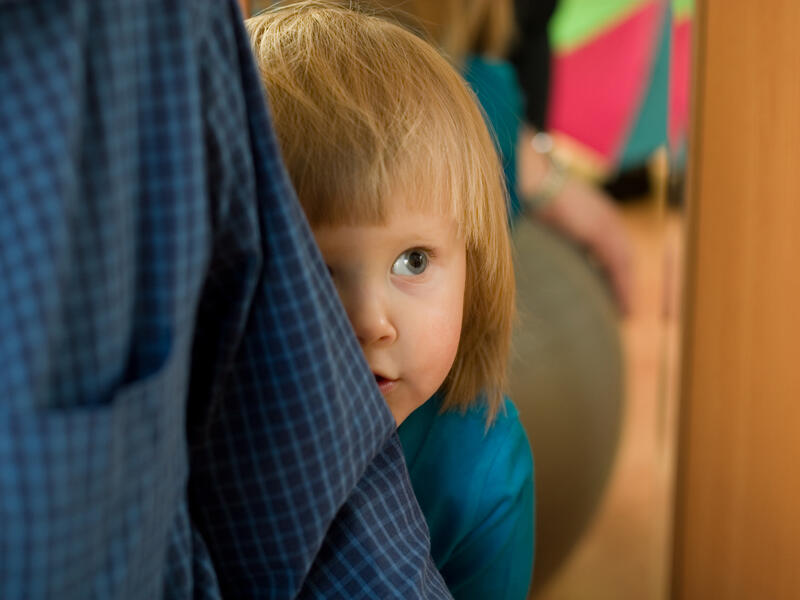Do you feel like your baby is extra clingy? Do you have a hard time stepping out of sight without them crying? Are drop-offs at day care or a grandparent’s house extra upsetting?
Your baby has reached a new milestone
Your baby is experiencing anxiety about being separated from you, known as separation anxiety.
This occurs as your baby begins to develop the understanding that things exist when they cannot see them, a thinking ability known as object permanence. Separation anxiety is a stepping stone to object permanence. All babies move through this stage.
Most babies start to show signs of separation anxiety around 8 months old. However, your baby may show signs earlier or later. Typically, separation anxiety peaks between 10-18 months. By 2 years old, babies typically move out of this stage.
Simple games and tips can help your baby progress through this stage.
Now you see me, now you don’t
Play simple games that teach your baby that just because they can’t see something doesn’t mean it is gone forever. Watch as your baby develops from thinking a hidden object is gone for good to actively looking for it.
Play games that show your baby objects don’t just disappear such as:
- Peek-a-boo. A great game to reinforce that you are still there.
- Hide and seek. Cover a toy with a blanket. “Where’s the bear?” Uncover it. “Here it is!”
- What’s this? Repeatedly, pull objects in and out of containers.
- Leave and return. Hide and reappear from behind the door, or leave the room and then call out for your baby before reappearing.
When people and things consistently return, this encourages a sense of security and the development of object permanence.
‘Goodbye. I’ll be back!’
Goodbyes may be challenging for a while. Make leaving easier by following these simple tips:
- Give baby time to get comfortable: Visit caregivers ahead of time so they become familiar to your baby. Ask sitters to come early to give baby plenty of time to adjust.
- Develop a routine: Make a short and sweet ritual and stick to it every time you say goodbye.
- Keep the mood light and confident: Show warmth and enthusiasm for the caregiver and say goodbye with a calm, reassuring tone.
- Reassure you will be back: Choose an activity your baby knows. “I will be back after snack.”
- Always say goodbye: Never distract and sneak out of the room.
Finding ways to help your baby feel secure is important during this major developmental milestone.
Learn more
- What’s your baby’s temperament? Knowing can help parents
- Play games to boost your baby’s brain development
- Childhood anxiety: Tips for parents on signs & coping skills
…
Posted In Children's, Family Medicine, Health Information, Parenting
